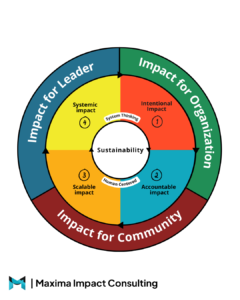Study: Short Business Lifespan Without Organizational Transformation Initiation

At the beginning of 2024, PwC released a report stating that 63% of CEOs in the Asia Pacific believe their current business models will not survive the next 10 years if they continue operating business as usual. They are constantly faced with two major challenges: increasing profits with a short-term focus and finding new business models for future sustainability. To address these challenges, organizational transformation becomes an inevitability for businesses to stay relevant.
Organizational transformation is the process of aligning an organization’s strategy to achieve a goal with the organizational culture or work habits. In undertaking transformation, organizations face significant sacrifices. According to a McKinsey study conducted in 2021, transformation can result in transformation’s value loss, meaning potential business value may be lost during the transformation process. Transformation’s value loss occurs at every stage of the transformation, as illustrated in the figure below.

Figure 1: Analysis of Potential Value Loss During Organizational Transformation According to McKinsey, 2021
Based on this data, it is clear that every phase of transformation has different levels of value loss. Therefore, it would be futile for an organization not to earnestly pursue transformation, as the organization will experience value loss but may not reach the optimal goals of the expected transformation.
In the same report, McKinsey notes that the success of transformation depends on how comprehensive the transformation approach is. The number of initiatives carried out can also increase the success rate of the transformation.

Figure 2: Transformation Success Rates When Starting Organizational Transformation According to McKinsey, 2021
However, not just any initiative will impact organizational transformation. To ensure transformation initiatives are comprehensive, Maxima has an alternative approach with the Maxima Impact Framework, which believes that transformation initiatives begin with the following stages:

Figure 3: Maxima Impact Framework Diagram by Maxima Impact Consulting, 2024
Intentional Impact Phase
This is the phase where the organization consciously fosters a sense of urgency, defines a vision for change, and identifies the right coalition for the initiatives to be undertaken. This helps break down the grand visions of transformation into more concrete initiatives.
The next phase is Accountable Impact
This is the phase where the organization designs measurable transformation initiatives. Initiatives are not just created and then immediately executed; there needs to be regular monitoring throughout the process to see how each initiative contributes to the overall transformation. In this phase, we must ensure that every initiative has clear and measurable success indicators, so that at the end of the evaluation, we can identify which initiatives have successfully contributed to the transformation and which have not.
In this phase, the initiatives are typically either pilot projects or quick wins. Pilot projects are generally carried out in specific parts of the organization to test transformation initiatives before they are widely implemented. Meanwhile, quick wins are initiatives that can foster optimism for change among those involved in the transformation. These quick wins help build trust among those who will be impacted by the transformation.
Next is the Scalable Impact Phase
After gathering enough data from the initiatives carried out in pilot projects, we can identify which transformation initiatives have made significant contributions to the transformation process and which have not performed optimally. Successful initiatives can be replicated in other units within the organization, thereby expanding their impact across the entire organization. Additionally, initiatives can be modified by incorporating technological aspects to speed up processes or automate them, making the transformation’s impact even greater and more widespread.
The final phase is Systemic Impact
In this phase, initiatives that have been implemented across various layers of the organization are encouraged to become sustainable. One way to do this is by institutionalizing the initiatives through various corporate instruments, such as company regulations. Moreover, this systemic approach also involves making the initiatives more comprehensive by complementing them with a supportive ecosystem that ensures their sustainability. The systemic impact approach does not separate transformation initiatives from the company’s existing system. For instance, rather than limiting it to specific units like the Project Management Office (PMO), the transformation initiatives are integrated into the existing systems.
In practice, transformation occurs as a result of various transformation initiatives. However, not all initiatives lead to the expected transformation. By using the Maxima Impact Framework, we can observe that transformation initiatives occur gradually and comprehensively.
Have you started or are you considering organizational transformation in your company? Let’s discuss it with us!
